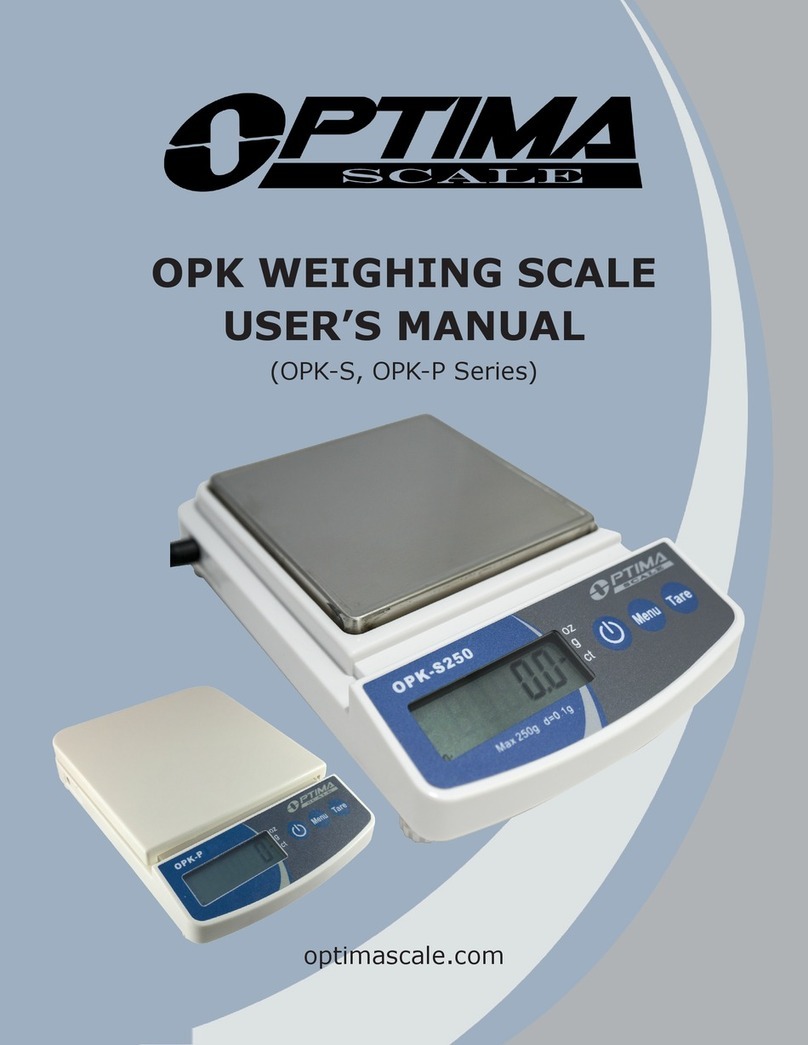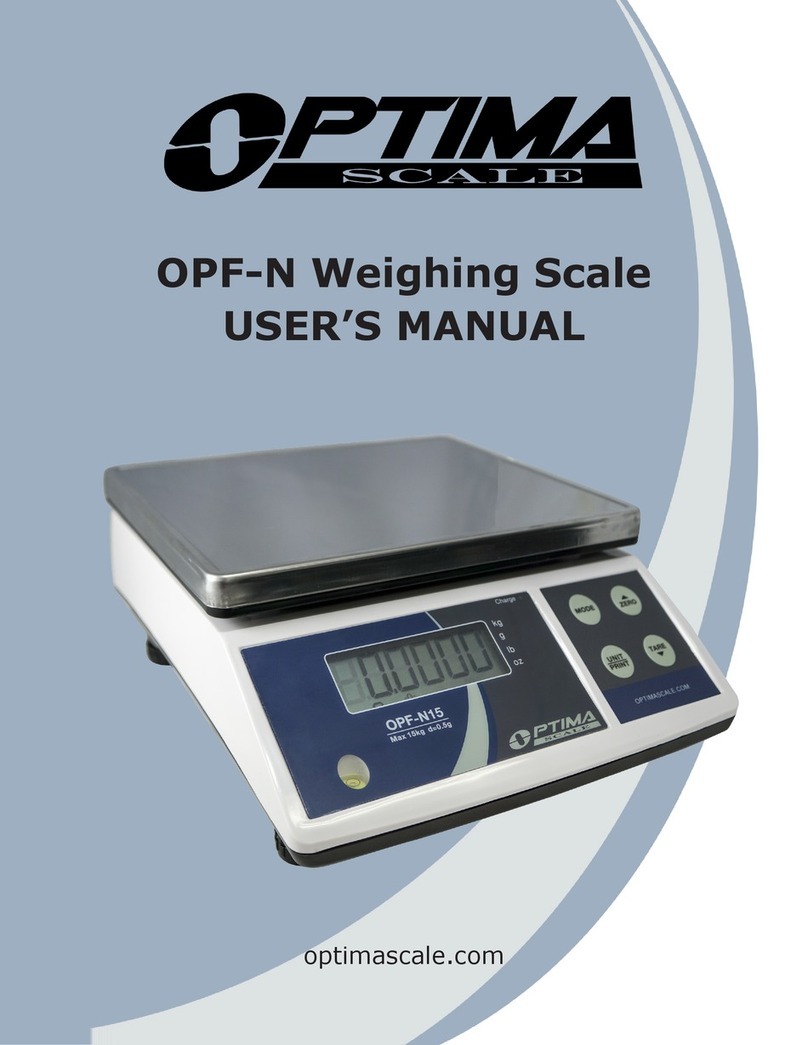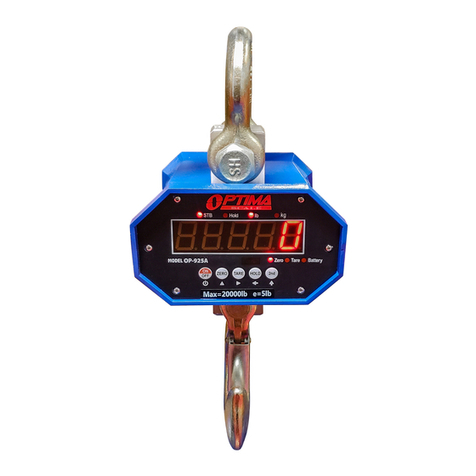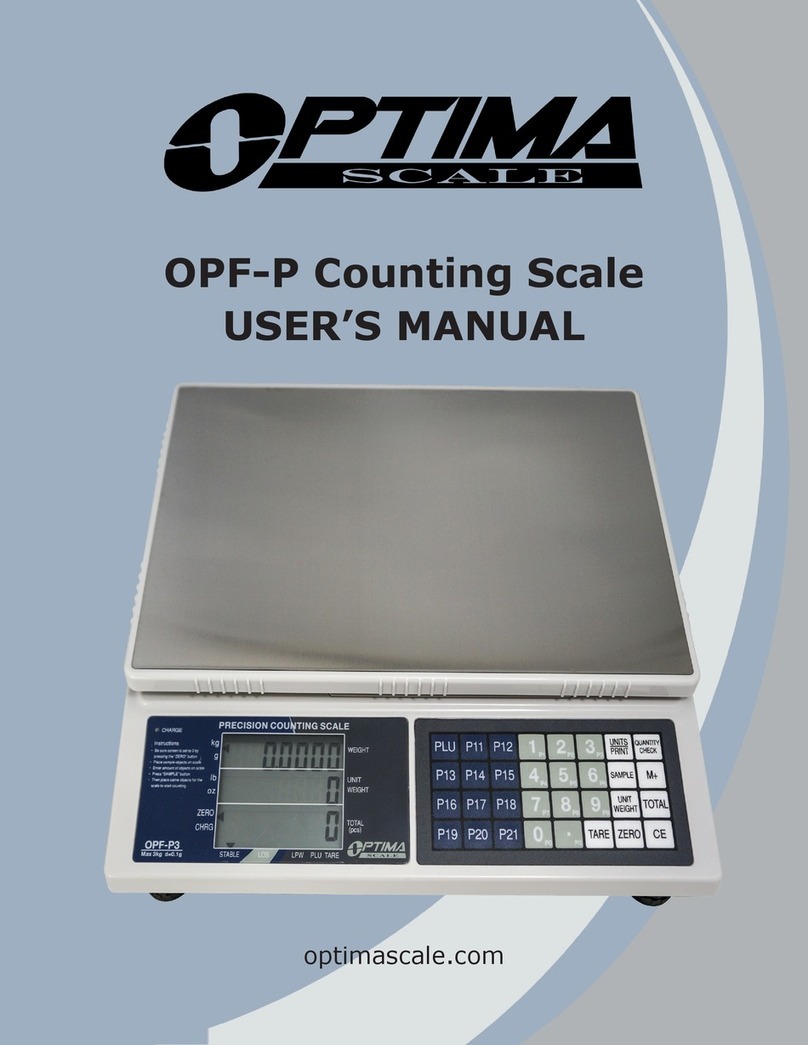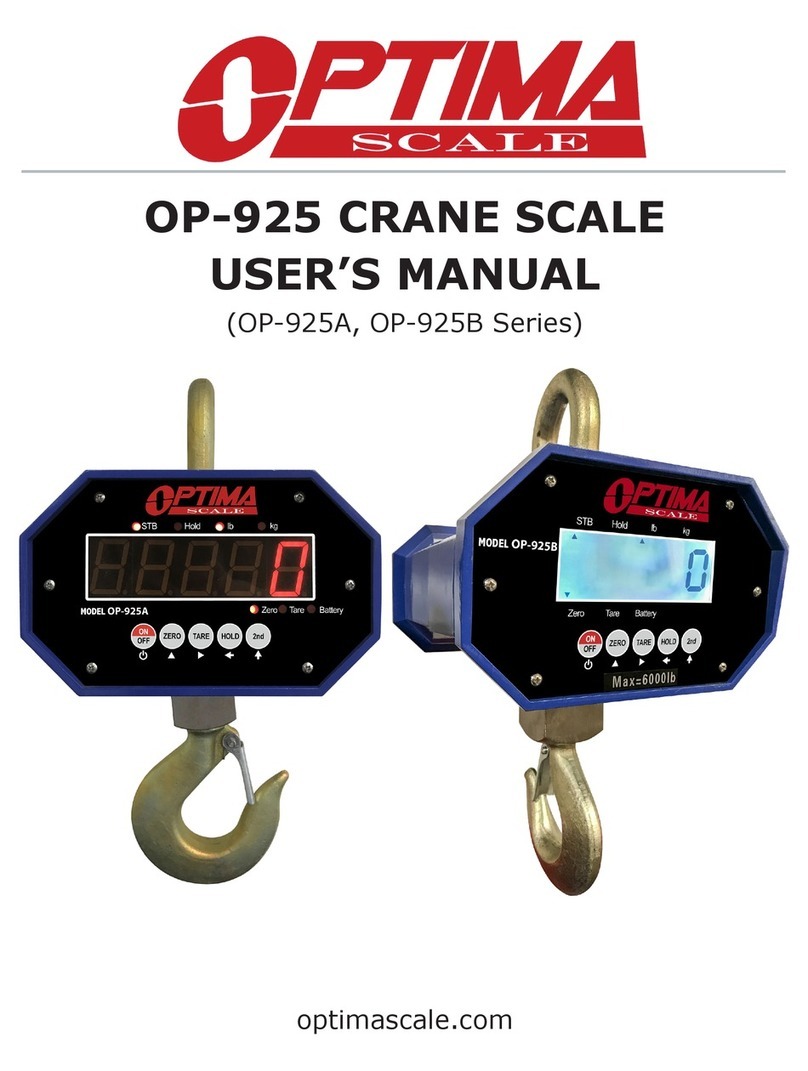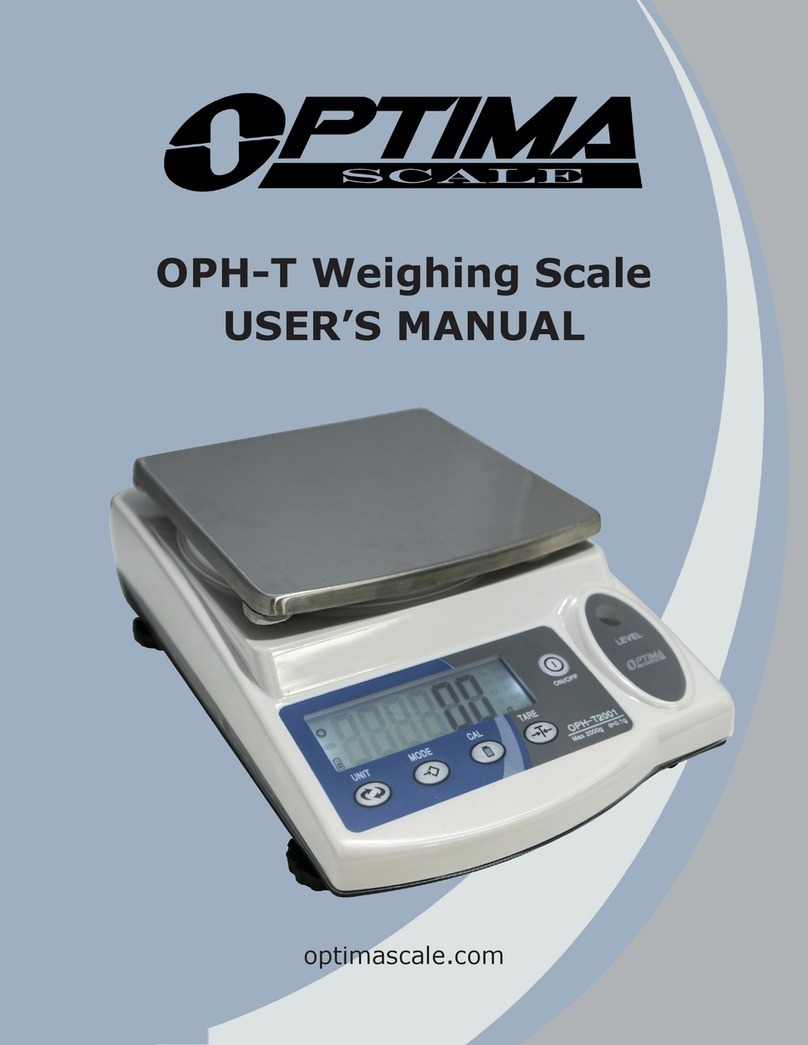2. Internal weight calibration: for internal calibration balance only: the parameter shall be
set as C1-0 before calibration.
A. Press CAL and then the balance displays “Cal in”. 2s later, the balance displays “Cal…” and
calibrates the zero point.
B. After that, the balance displays “Cal in” and the motor loads the internal weight to the internal
weighing bracket automatically. When the motor stops rotation, the balance displays “Cal…” and
calibrates the internal weight automatically.
C. After the calibration is over, the balance displays “Cal up”, the motor moves away the weight
automatically and the balance displays “Cal…”.
D. 2s later, the calibration is over, the balance returns to the position of zero point, and 0.0000g is
displayed.
In the same way, after the balance calibration is over, use a full scale weight (e.g. 100g or 200g
standard weight) for testing, be sure the indication on the balance is in consistent with the weight
value and the error shall have no more than 3 bits. If the error has more than 3 bits, the balance
shall be calibrated again.
Chapter VII: Correction of Internal Calibration Weight Value
Background reference: for an internal calibration balance, its built-in weight grade shall be lower
than E2 or F1 and the error shall be higher than the permissible tolerance of the balance. In order
to eliminate the D-value between internal and external weights, the parameter correction is
specially set.
Note: This setting is limited to internal calibration balances only. When the internal weight
calibration is used for internal calibration balance and the D-value is more than 1 in comparison
with external standard weight, the internal weight value shall be adjusted.
1. Under the standby condition, only the decimal point flickers or “PEFIL” is displayed.
2. When “PFAIL” is displayed, press ON/OFF to keep the decimal point on.
3. Press CAL and the LCD displays 1; press TARE again and the LCD displays 2 again.
4. Repeatedly press CAL and TARE until the LCD displays 7.
5. Press ON/OFF and the balance displays the weight value L100.0012.
1) Press CAL and the value 100.0000 flickers;
